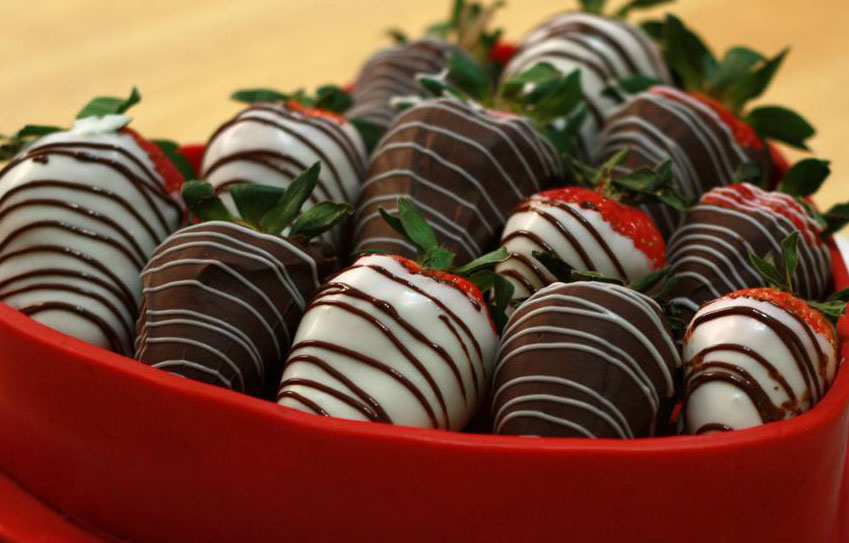Valentine’s Day is coming, and with it chocolates galore. Don’t turn away from chocolate, advises Assistant Professor of Communication Daniel Cochece Davis, because it can give the brain a natural boost.
Cochece Davis, who will be speaking at the University Club on Friday, studies the connection between communication and neuroscience. For years, he has explored the benefits that foods like chocolate have for the brain.
“Chocolate – like cheese and ice cream – contain a substance called lecithin, which naturally occurs in a lot of milk products,” said Cochece Davis. “Interestingly enough, humans are the only mammals who regularly consume milk products past weaning. And we have a cerebral cortex full of intricate connections.”
Lecithin can offer people what Cochece Davis calls an “ah-ha experience” by building neurological bridges in the brain. “If you have two neural pathways, and you add a bit of lecithin – like a piece of chocolate – 30 minutes later there can be a sudden interconnection of the two pathways, creating a neural network.”
He said when a student comes to him with a question about class, Cochece Davis tends to offer the student a piece of chocolate. “It’s so funny. About 10 or 12 minutes later they will say, ‘Oh, I get it!’ because a neural pathway has been created.” Lecithin can also play a role in neural recall, said Cochece Davis, which offers a boost to an already active pathway. “I tell my students if they have a piece of chocolate 30 or 40 minutes before an exam, it’s almost like cheating,” he said with a smile. “They get a big kick out of that.”
Cochece Davis came upon chocolate as a subject of research through another career. He spent several years taking culinary classes when he managed a bed and breakfast in the Sonoma Valley. “I wrapped up my time there with pairings of wine and chocolate,” he said. “If you take a piece of chocolate and chew it, then take a sip of red wine, it suddenly doesn’t taste like wine or chocolate – it becomes something else. It’s transformative.”
An interest in those chemical connections continued when he was a residential coordinator at the University of Southern California. He decided to hold chocolate tastings as part of the programing for gifted floors. “We tasted it and talked about how it varies across cultures,” said Cochece Davis.
Students in his research methods class at Illinois State also take part in chocolate tasting, after designing a questionnaire around chocolate users. “We’ll start with something like Hershey’s, then move to a Swiss chocolate, and then back to Hershey’s. The students notice right away that the Hershey’s tastes completely different from the first tasting,” said Cochece Davis. “It gives us the chance to talk about order affect, and the order you experience things. Then we get into learning – what is learning and how do you boost your brain.”
He always advises students to steer clear of caffeine. “Neurologically speaking, chocolate does not have caffeine in it,” said Cochece Davis. Chocolate instead contains theobromine, which is a stimulate, but is missing one flag that distinguishes it from caffeine. “So coffee is a jar to the nervous system, a shock to it. Whereas tea or chocolate stimulates, but you are still able to stay focused.” When studying, he encourages students to go for a piece of cheese, a small bowl of ice cream or a piece of chocolate. “They can play a role in neural encoding, helping to learn.”
For his next chocolate-related project, Cochece Davis hopes to further investigate the impact chocolate has on students’ learning ability. “We’ll be giving students chocolate, lecithin or a placebo.” He paused for a moment before asking, “So, do you think we’ll have a problem getting volunteers for that study?” He leaned in with a slight smile. “Somehow, I’m guessing we won’t.”


